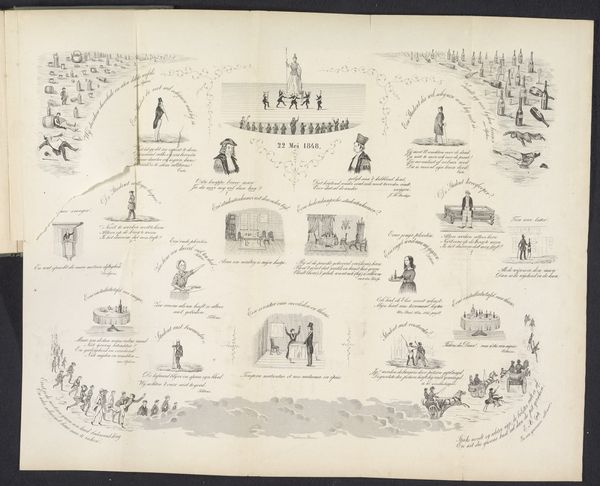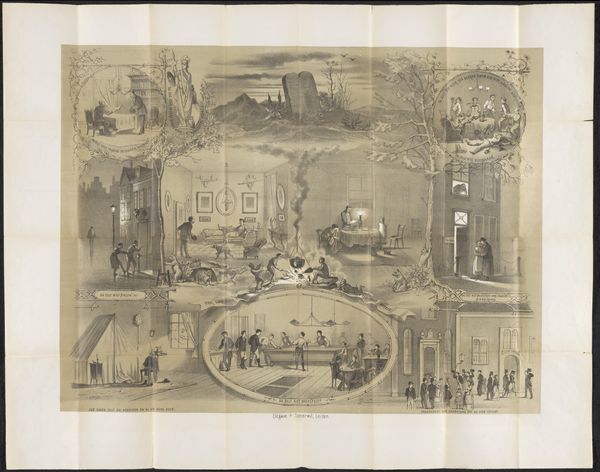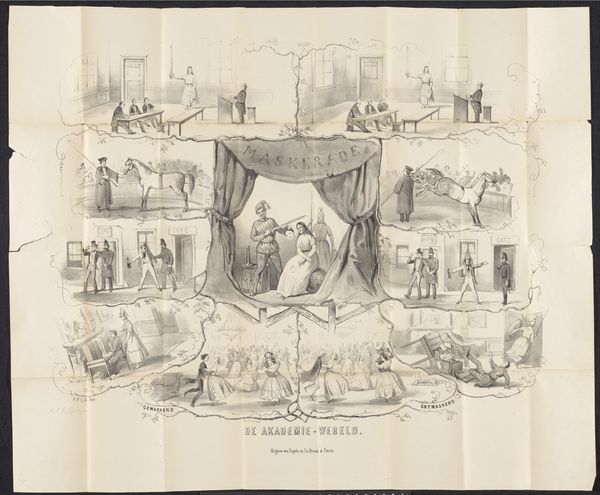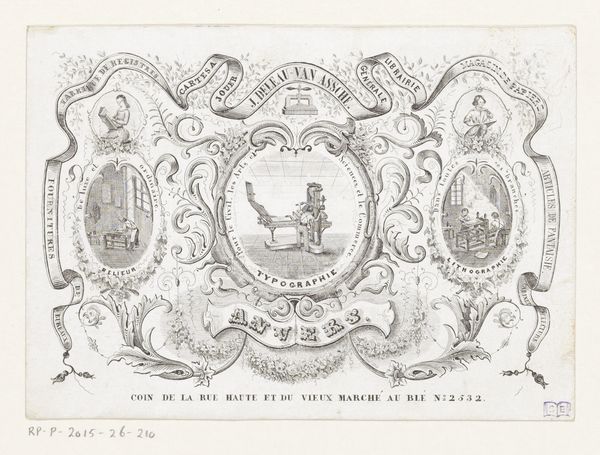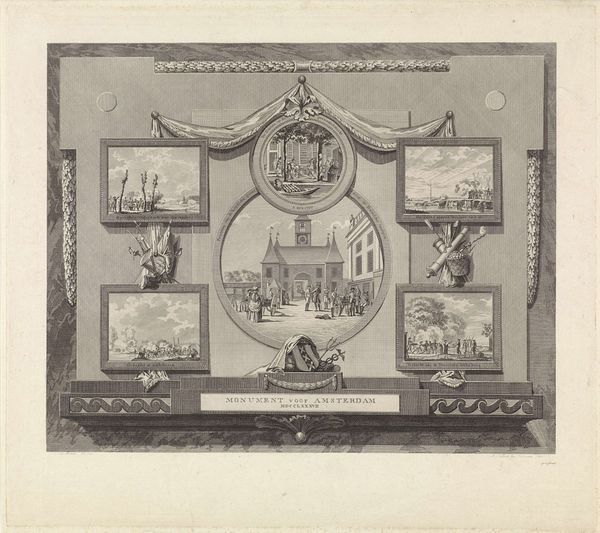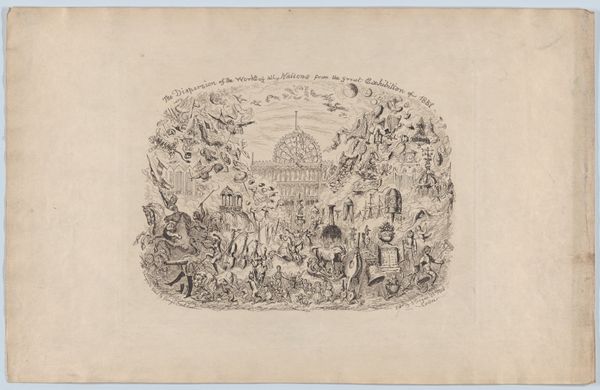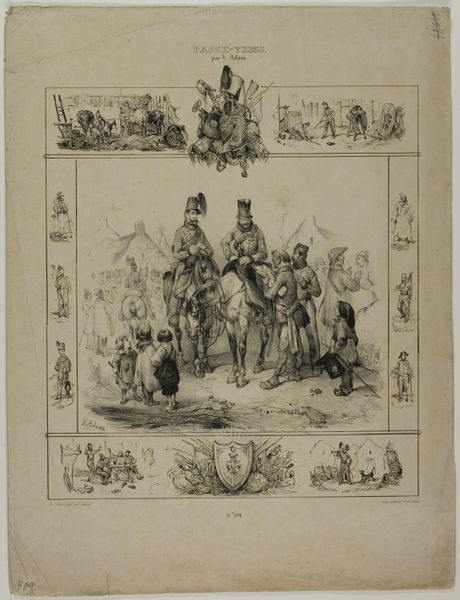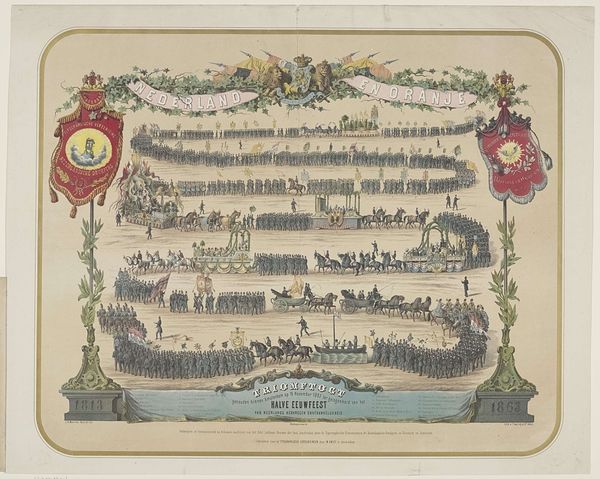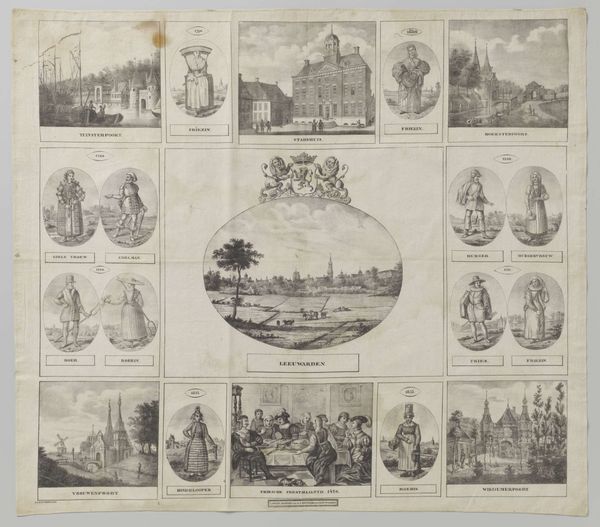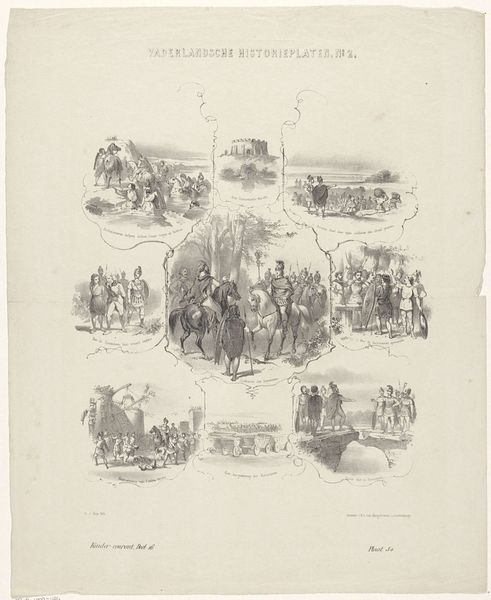
drawing, graphic-art, print
#
drawing
#
graphic-art
# print
#
genre-painting
Dimensions: height 575 mm, width 745 mm
Copyright: Rijks Museum: Open Domain
Curator: What an intriguing graphic print. This is a caricature featured in a Leiden student almanac from 1861. The piece, made by Johan Hendrik Hoffmeister, offers us a glimpse into the world and activities of students at the time. Editor: It’s fascinating. My eye is immediately drawn to the central image—a troupe of red birds dancing in some kind of pavilion or hall. They look rather stiff and awkward, not exactly graceful! What does that represent, I wonder? Curator: Well, in the 19th century, these almanacs were produced annually, filled with satire, illustrations, and student humor. Given that this is Dutch, the red birds might refer to specific professors or prominent figures at the university lampooned here. Each little vignette seems to capture something distinct. Editor: Yes, above the dancing birds, we see a woman perched on a pile of books—a symbolic figure, perhaps? And around the edges, various scenes—students riding a camel, playing billiards, even a train. Each encircled with floral patterns. Curator: Exactly! The woman above clearly represents knowledge and scholarship. Almanacs are not typically sites for objective journalism, so it makes sense to present scholarship allegorically. And the other vignettes underscore aspects of student life. I imagine the camel ride and the train travel may speak to exploration, the exciting new accessibility afforded by technology and industrial advancements of the era. Even a critique of privileged pastimes might surface. Editor: It feels celebratory, but subtly subversive. Those dancing birds do suggest a humorous take, even poking fun at serious figures and themes. I do wonder who and what these students were specifically targeting. The symbols used would certainly resonate very specifically for contemporary readers. Curator: Indeed. Almanacs such as these provide invaluable historical and cultural insight. They offer snapshots of prevailing ideologies, daily activities, social engagements. Studying them reminds us that students were, as they remain, highly perceptive commentators on social changes and values. Editor: It leaves me pondering on humor and how its symbology reflects a specific time and audience, especially the continuity in cultural expression. Curator: For me, I think about what has changed. Though student pranks persist, the landscape of targets evolves with time. Still, I hope students of today continue creating subversive content as rich as this piece of ephemera.
Comments
No comments
Be the first to comment and join the conversation on the ultimate creative platform.
